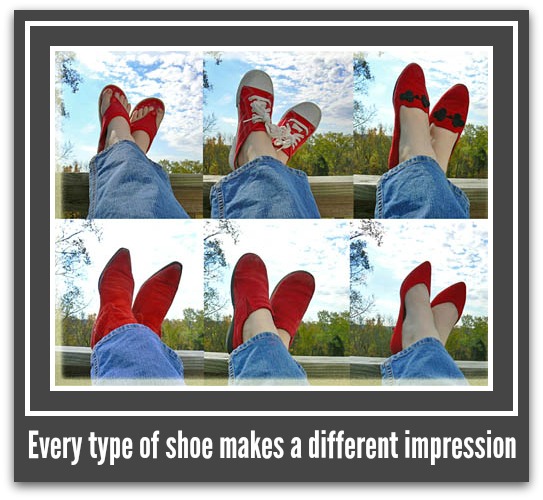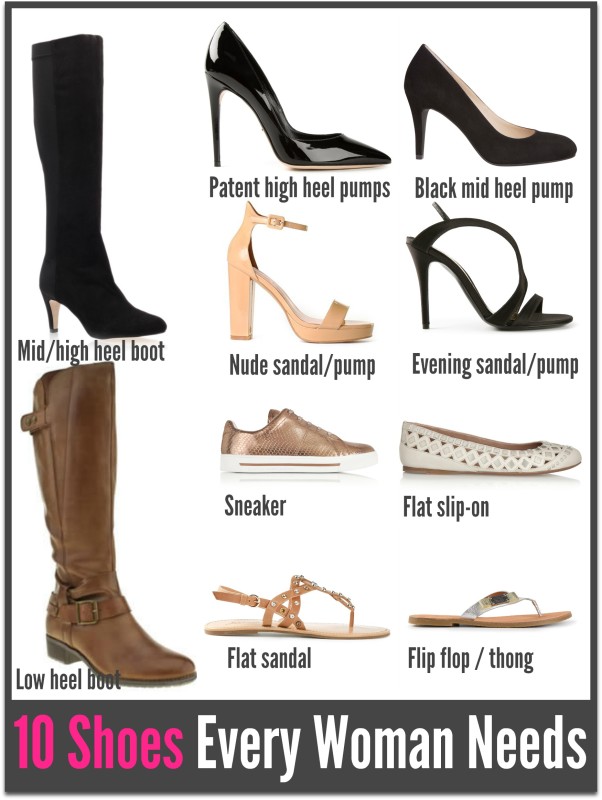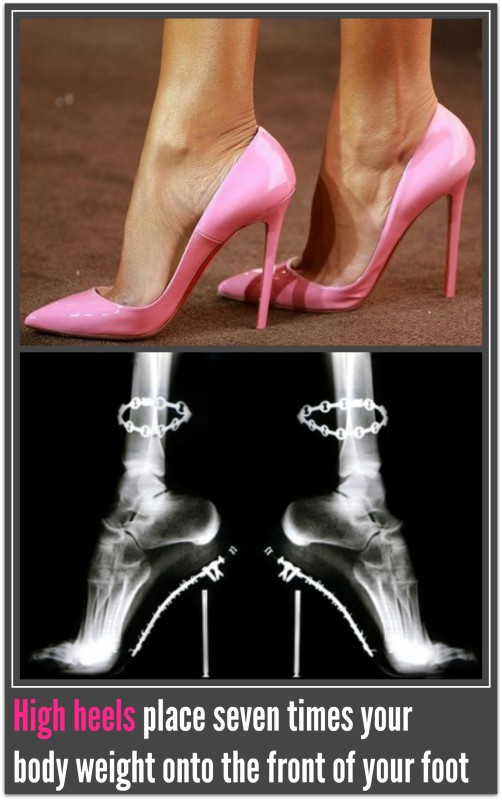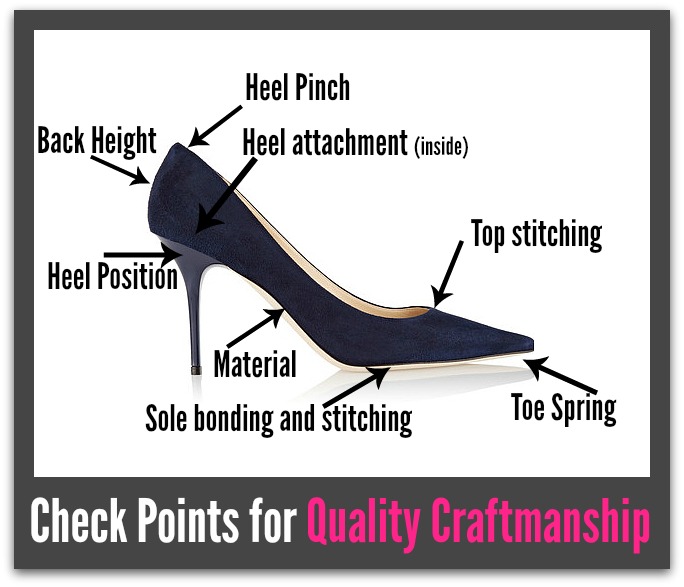
Let’s face it what girl can live without lots of shoes? They can make or break an outfit and mood in milliseconds. Surely they have to be our ultimate accessory!
Shoes hold a special power over women and we need little persuasion to purchase a new pair. No matter how many shoes we have, there’s always room for more.
If you’re not convinced take this simple test:
Put on any outfit and try it with high stilettos, then a low sandal, a Doc Martin like boots, a pair of classic pumps and finally a pair or thong/flip flops. Instantly you’ll see and feel how each shoe lends its personality to the outfit and how it dresses up or down your look and if it meets your personal style. Instantly shoes have the power to change your image, demeanor and mindset. The power of shoes is quite amazing, and once realized, can become a powerful image making tool.
However, not all shoes are created equal and for that reason it is worth knowing a little more about the intricacies of shoes.
The Price You Pay
While expensive shoes offer a higher standard of craftsmanship and design, there are times when less expensive shoes have their place:
- When comfort is more important than style. Especially if you are going to be on your feet all day. I have no hesitation in saying that I would rather wear my $89 pair of Easy Steps than my sky-high Prada stilettos if I’m set to walk the city in on a day long fashion reconnaissance mission.
- When the shoes are for a special event and you have no intention of wearing them again. This could be anything from a pair of specially dyed satin court shoes to an extreme style for a special outfit.
- When you’re doing the gardening or if the weather is bad.
- When you’re wearing something on the cutting edge of fashion, and it’s not likely to stay around very long. Interestingly fashionable foot wear only came into vogue in the early 1960s with dramatic improvements in the manufacture of ready-to-wear shoes.
Cheap is Not All Right When
- You’re aim is a great impression e.g., interviews and important occasions.
- You’re about to purchase a classic style i.e. black pumps or knee high boots.
- When you intend to wear them a lot. No matter what the style, value will always come from investing in quality for those items you intend to wear the most.
Ten Basic Shoes Every Woman Should Own
- Good quality black leather pumps shoes with a medium-high heel.
- Good quality black patent leather pumps shoes with a medium-high heel.
- Sneakers
- Casual shoes e.g., loafers or ballet flats
- Flat sandals in black, white or tan
- Flip flops/thongs
- Nude heeled sandals or pumps
- Black medium to high heeled boots.
- Tan low to medium heeled boots.
- Dressy evening shoes
They’re Gorgeous (who cares if my feet hurt?)
You will. It only takes about an hour of walking in an uncomfortable pair of shoes and your face will take on a tortuous scowl and your disposition will quickly follow. Uncomfortable shoes are not worth their cost, no matter how little you paid for them or how prestigious the designer’s name on the label.
For the sake of your health, disposition and those who have to work or live with you, buy shoes that are comfortable.
Here are a few of my favorite tips to ensure comfort:
- Buy shoes in the afternoon when your feet have expanded somewhat through being upright and walking.
- Know your size if buying online; like clothing sizes differ from country to county and even label to label. Have you feet measured years after you turn forty because your feel flatten with age.
- Purchased lower heels the older you get. After fifty the pad under the front of your foot loses its depth of fat making standing in high heels more painful. TIP: You can try adding gel inserts such as ‘Party Feet’ to help.
- Look for shoes made from soft, high-quality leather or suede as these tend to stretch to accommodate your foot shape.
- Don’t get caught telling yourself the shoe will stretch, it may a little if it’s leather but on the whole it’s better to buy shoes that are comfortable at the time you buy them. Shoes that have top stitching around the outside of the mouth (vamp) of the shoe will never stretch in that region.
- Stick to heels no higher than 8cms / 5inches.
- Sturdy heels: those that have plenty of purchase with the ground i.e., stacked, classic and wedges cause much less foot strain than heels such as kitten and stilettos.
- Pointy toed shoes are less comfortable than toes that are wider.
- Sturdy soles: Ultra thin soles can be torture because there’s little between your feet and the street. Solid soles act as shock absorbers. TIP: You can also ask your shoe repairer to add rubber soles.
- Go with higher cut vamps: the closer the vamp is cut to your toe cleavage the likelier they are to be uncomfortable – mid height vamps are best.
- Shoes that encase your foot rather than allow in to just sit on the insole will ensure your foot stays in correct alignment and can prevent arch, ankle and knee pain.
- Arch supports and at least a heel of 2cms / ¾” will also aid in the comfort of the shoe.
- Comfort also comes from good fit and quality workmanship, so it’s wise to know the signs of good workmanship.
Signs of Good Workmanship
- Back height and heel pinch. Hold the backs of the two shoes together and check that they are equal height. Then put each shoe down to make sure the sole sits flat on the floor.
- Toe spring. The tip of toe should sit off the ground to allow for flexibility when moving forward.
- Synthetic or leather. No quality shoe has an upper or lower in anything but leather. The material in the shoe should be clearly stated on a label or printed on the inside of the leather upper. Leather soles are always better than resin. Resin soles will make your feet hot due to greater friction on contact with the footpath. Leather inner soles provide more structural support, insulation and greatly add to the life of the shoe.
- Top line. Look at the inside of the heel to check that the shoe’s outside rim is straight.
- Top stitching. This should be straight and well machined.
- Sole bonding. You should not be able to pull the insole away from the base. There should be some cushioning material under the innersole for comfort.
- Sole stitching. A leather sole should be stitched or welted, to the upper. A channel is cut into the sole, the shoe is stitched together, and then the channel is put back to hide the stitching. You should clearly see the welt mark running all around the sole.
- Heel attachment. Press your finger inside and around the innersole and feel for any bumps caused by the size or type of nail used.
- Heel position. The center of the heel should be placed directly under the center of your heel as it sits in the shoe (not pictured).
Want More?
Watch this great feature on - the history of high heels.
Next Week:
How to Team Comfort and Quality with Style, Shoe Coordination, Clever Leg Enhancement Techniques, Care and Repair.





Hi Ann
I’ve been pondering your “Ten Basic Shoes Every Woman Should Own” and while I can see this may be so for the woman who works in a corporate job where business dress is required and who goes out quite a lot, I wonder whether it is relevant to a large number of women who don’t fit those two criteria.
I’m pushing 60 with a style that is more casual/boho than classic/chic. I work in a non-management role in IT where dressy casual is the norm and business dress sticks out like a sore thumb. I rarely go out except to movies, hiking, photography expeditions or the occasional Sunday lunch with friends. I walk a lot and travel everywhere by public transport. I recently ditched all my dresses, all but one maxi skirt and all my pumps because I hadn’t worn any of them for 10 or more years. Most of the shoes no longer fit anyway as my foot has broadened over the years from a C fitting to a D).
My current shoe wardrobe consists of a pair of black brogues, black suede slip ons (extra wide for comfort), black mid-length boots with a chunky heel, black ankle length boots in cut out leather (quite dressy), ivory beaded thongs, white sneakers with a scribbly art pattern and high heel strappy black and silver sandals (which are surprisingly comfortable so I am hanging on to them even though I haven’t worn them for years). Mainly black because I wear black or dark grey pants, or dark blue jeans. Then I have thongs and UGG boots for around the house, plus a variety of sport and dance shoes. But this is all I need.
I’m certain there must be many other women the same as me – especially in this era of work from home, solo entrepreneur and casual workplaces. I wonder if there might not be a need for an alternative list of footwear and even basic wardrobe?
Regards
Karen
Hi Karen,
From the sounds of things you are doing exactly the right thing.
It’s hard to write and satisfy everyone’s needs.
[…] Features: Well Heeled Part 1, Well Heeled Part […]